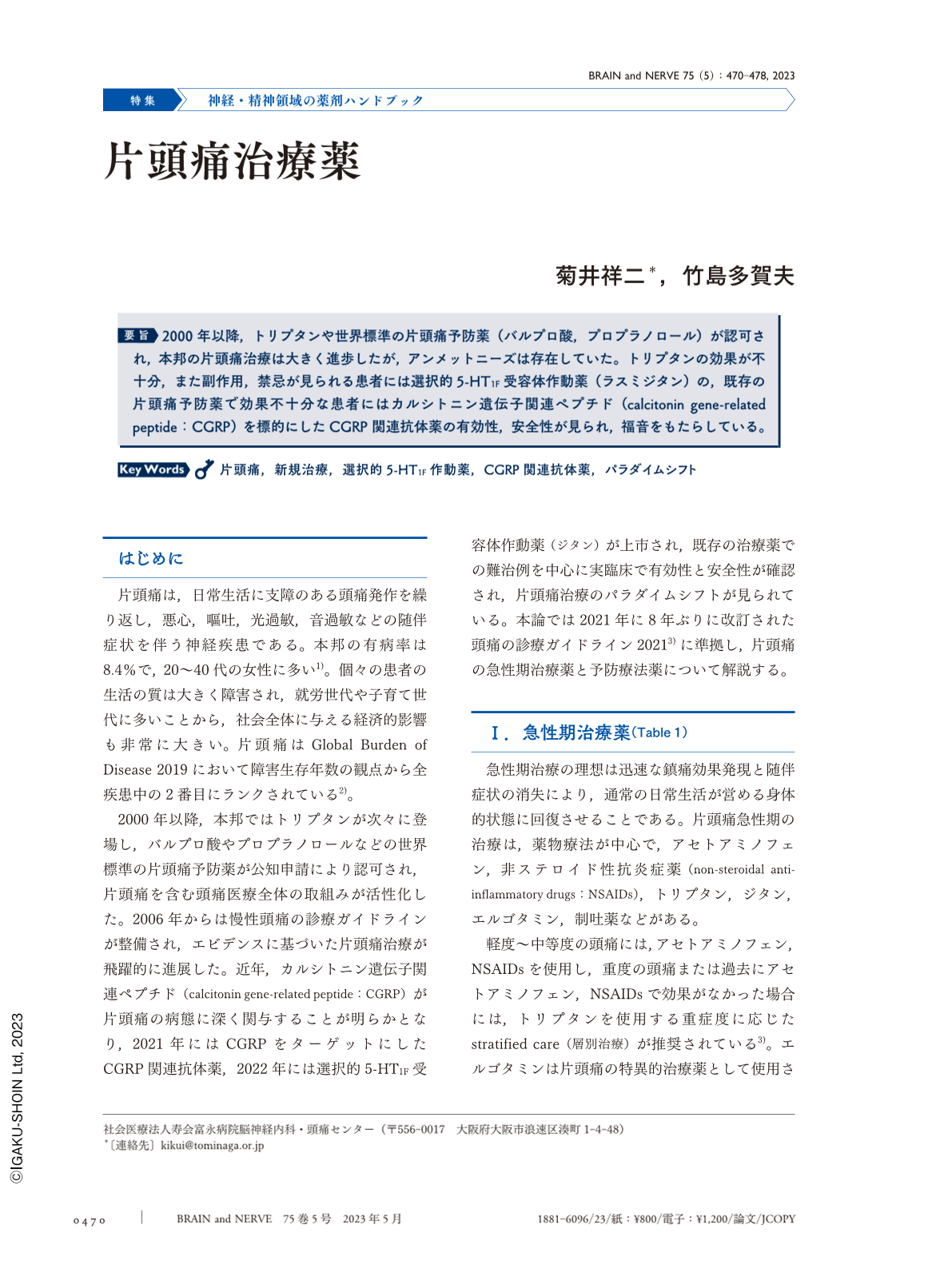Japanese
English
- 有料閲覧
- Abstract 文献概要
- 1ページ目 Look Inside
- 参考文献 Reference
2000年以降,トリプタンや世界標準の片頭痛予防薬(バルプロ酸,プロプラノロール)が認可され,本邦の片頭痛治療は大きく進歩したが,アンメットニーズは存在していた。トリプタンの効果が不十分,また副作用,禁忌が見られる患者には選択的5-HT1F受容体作動薬(ラスミジタン)の,既存の片頭痛予防薬で効果不十分な患者にはカルシトニン遺伝子関連ペプチド(calcitonin gene-related peptide:CGRP)を標的にしたCGRP関連抗体薬の有効性,安全性が見られ,福音をもたらしている。
Abstract
Migraine is one of the most disabling diseases with a significant socioeconomic impact. Approximately 8.4% of Japanese people experience migraines. In Japan, five types of triptans have been approved since the year 2000. Furthermore, the development of lomerizine and the approval of valproic acid and propranolol for migraine prophylaxis have greatly improved the treatment of patients with migraines. The 2006 Clinical Practice Guidelines for Chronic Headache were published by the Japanese Headache Society and prompted evidence-based migraine treatment. However, we did not obtain satisfactory results. Since 2021, the number of new treatment options in Japan will increase. Some patients with migraines do not benefit from the poor efficacy, side effects, or vasoconstrictive effects of triptan. Selective 5-hydroxytryptamine (HT) 1F receptor agonist (ditan), which does not stimulate the 5-HT 1B receptor, can compensate for the shortcomings of triptan. Calcitonin gene-related peptide (CGRP) is a neuropeptide that plays a vital role in migraine pathophysiology and is a target for migraine preventive therapies. Monoclonal antibodies targeting CGRP (galcanezumab and fremanezumab) and its receptor (erenumab) have shown consistent efficacy in migraine prophylaxis, with excellent safety profiles. Its effects on refractory cases have also been reported, and a paradigm shift in migraine treatment is emerging.

Copyright © 2023, Igaku-Shoin Ltd. All rights reserved.


